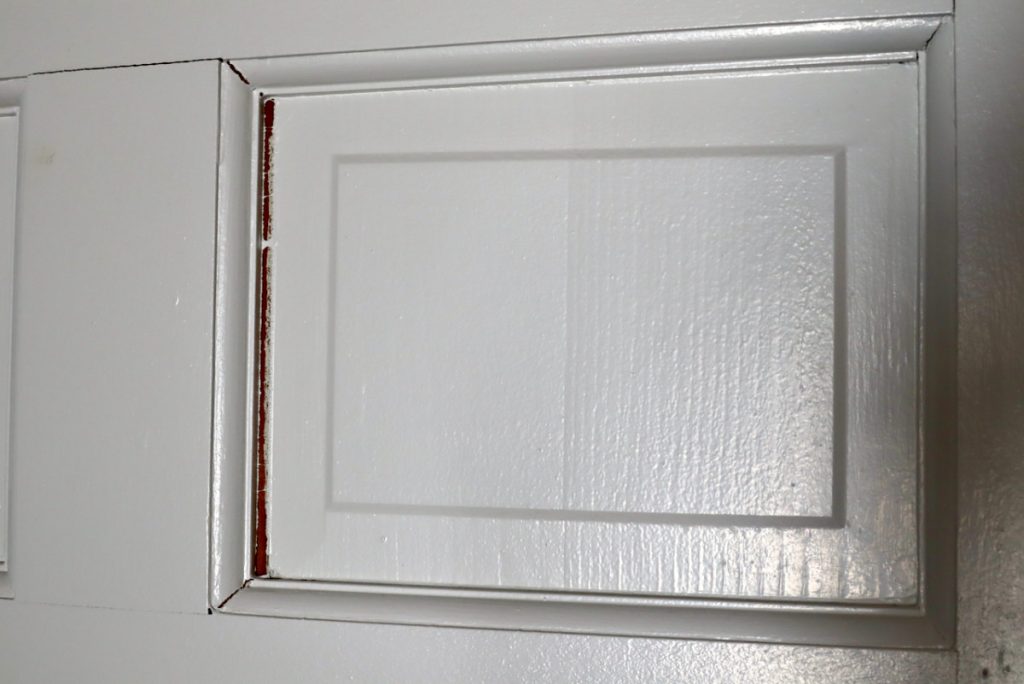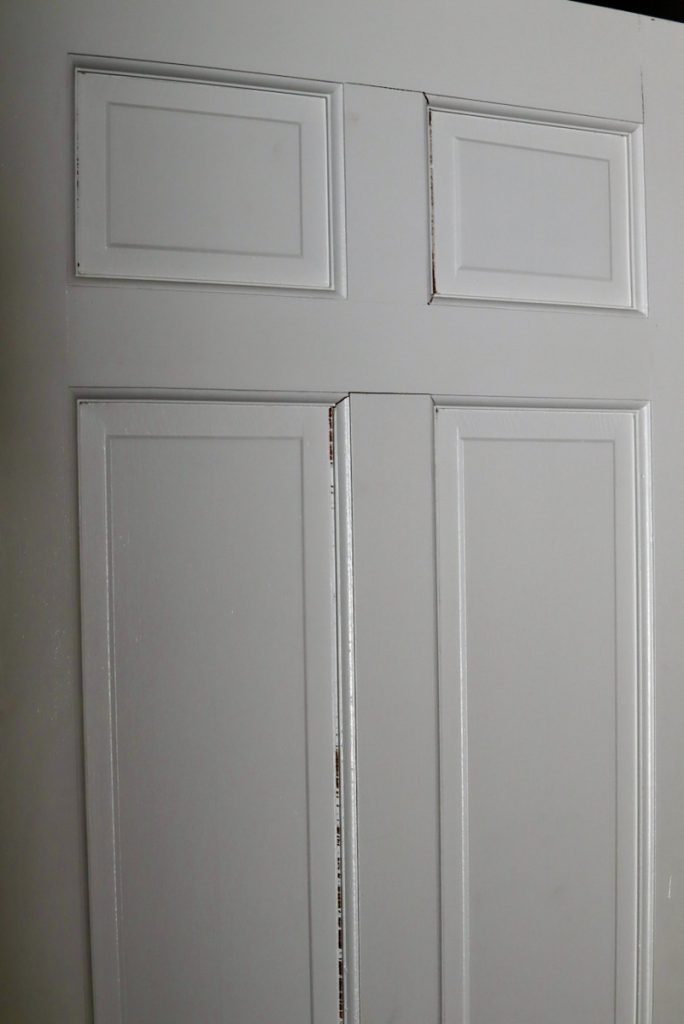We may receive a commission when you use our affiliate links. However, this does not impact our recommendations.

Last August we moved into our new home in New Jersey. The house that we purchased was built in the late 1960s and was still endowed with all of its original exterior and interior elements such as the original kitchen, bathrooms, doors, and windows.. you name it. The house truly looked like it had never been painted or updated in any meaningful way. Among the endless dated items and surfaces that required a facelift was the original fir (or was it southern yellow pine?) solid frame and panel doors that have darkened over the years.
We decided that part of the refreshing plan for the house would include painting the doors with opaque color instead of tediously sanding them and then applying two coats of varnish.
We hired a painting company and the work took a few weeks in July and August at the height of the Northeast heat and humidity season.

This is our basement door, which shows the most panel movement than any other door in our house. Basements are often more humid than the interior of the house and their doors’ moisture content is the highest.
Once we moved in and up until this January, everything looks sparkly bright and neat. But then I noticed that in the meeting line between the floating solid wood panels and the stiles (the upright part of the frame) of a few of our widest doors the color has changed, and now looked darker. I looked closely and saw that the dark line was part of the old wooden panel that did not receive a coat of paint. That surely couldn’t be the case I thought, as I remembered that the paint job on all our doors was great, so how could that happen? It didn’t take me long to figure it out – seasonal wood swelling and contraction were the culprits.


The nature of frame and panel construction is that the frame does not change its width with the changes of humidity – only the panel is “allowed” to expand and float right and left with the changes in air humidity. In the summer when it is more hot and humid, the panel swells and pushes into the stiles’ grooves. In the winter, and with the drop in humidity the opposite happens.

Our doors were painted when the house’s air conditioning system was down, the humidity was high and the panels were at their maximum width. Then as we moved in and when the humidity dropped during the cold winter, to 35%, the panel shrank and moved out of the groove, exposing a strip of surface that has not been painted.


What can we do? The best option is to paint the dark stripes now when the panels are at their minimum width and are fully exposed. Once the humidity rises again they will swell and move back into their tucked-in position in the depth of the grooves. Next winter the panels will shrink back but this time their “private parts” had already been covered with a coat of paint so any repeated embarrassment to them or the woodworker who lives in this house will be avoided.
If you have to paint solid frame and panel doors try to do this during the winter. But if you have no choice and need to paint in the summer try to control the doors humidity levels and their surroundings, otherwise you’ll have to deal with the same situation as I just described. One good course of option is to paint them first, immediately after the house AC system is shut down for the renovations. Since the panels are at their thinnest it will take them some time to catch up with the rising humidity – which will give you a window of opportunity to paint them.
Here are some supplies and tools we find essential in our everyday work around the shop. We may receive a commission from sales referred by our links; however, we have carefully selected these products for their usefulness and quality.








